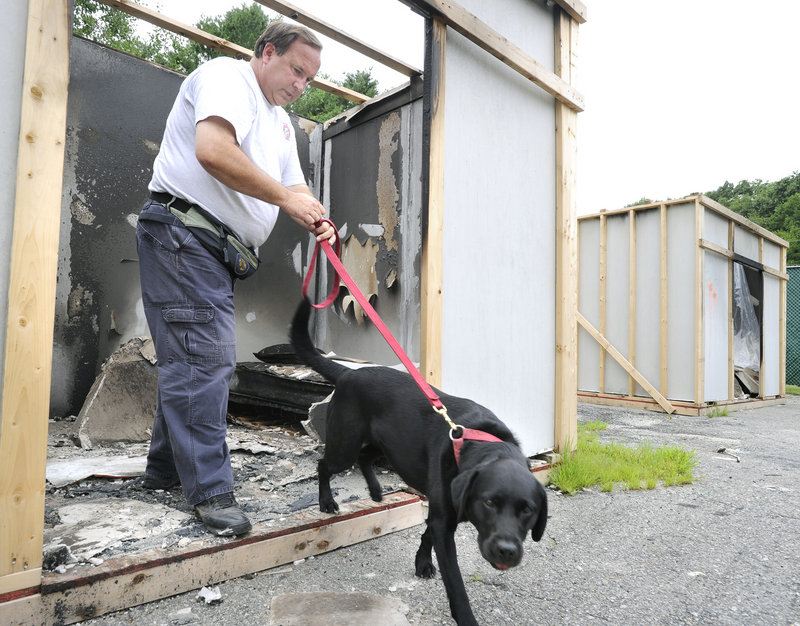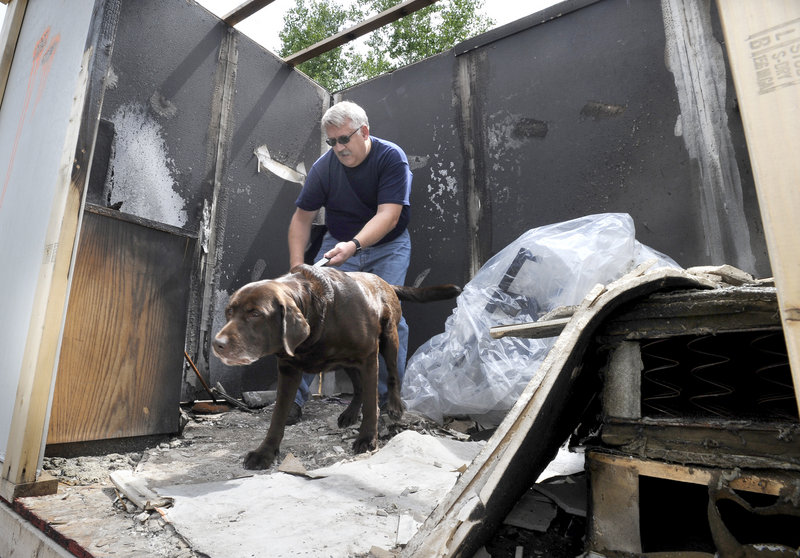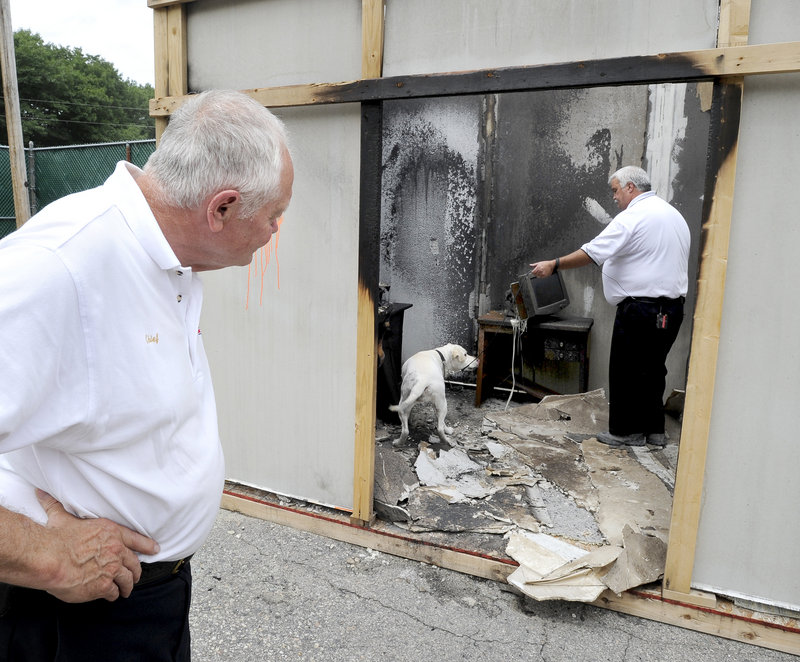YARMOUTH – Winchester knows the drill. When Steve Gallagher points and gives the go-ahead — “Seek” — the chocolate Lab begins sniffing.
When he picks up the scent of a fire accelerant, the dog sits and points to the area. Gallagher responds by holding up a hand and commanding: “Show me.”
Winchester dips his head a couple of times to confirm the hit.
“I can spend eight to 10 hours digging out, shoveling out a fire scene and not get what I need. Or I can put the dog out there for 15 minutes,” said Gallagher, who’s the assistant fire chief in Chillicothe, Ohio. “He’s a huge time-saver.”
Every day is a work day for accelerant-detecting dogs and their handlers. When they aren’t investigating fires, they continue their training. This week, Gallagher and Winchester are among the 14 teams that have gathered in Maine to work toward their annual recertification.
The three-day program involves classroom time, quizzes and simulated fire scenes at the Coastal Mutual Aid Association’s Fire-Rescue Training Facility in Yarmouth. Today, a chemist will test the dogs’ ability to detect odors.
All of the teams will probably pass, said Paul Gallagher, a former state police trooper who runs the program. Teams that fail are taken off duty immediately and must arrange to spend a week or two with him to get back into form, he said.
Paul Gallagher did the initial training for all 14 dogs, then worked with them and their handlers for five weeks in Alfred before they began their jobs in Maine and elsewhere in the United States, and in New Brunswick.
The dogs, all Labradors or Lab mixes, came from places like rescue organizations, shelters and Seeing Eye programs.
Molly, an arson dog in Allenstown, N.H., who has a talent for detecting accelerants on people, was rescued from New Orleans after Hurricane Katrina.
Gallagher looks for dogs that are sociable and have a drive for food. The dogs receive food as a reward for their work.
State Farm Insurance has been sponsoring the Maine-based program since 1993. More than 250 teams have gone through the program. The insurer pays about $23,000 per team — for the dog, the initial certification and travel costs. The departments that the dogs work for pay for recertification.
As the country’s largest property and casualty insurer, State Farm felt it was its responsibility to help curb arson and fraud, said company spokesman Joe Quijano.
On Tuesday, Winchester was still eager to work after making his way through a series of mock fire scenes.
Winchester is a veteran at 11 years old — an age when many other arson dogs are retired. He’s well known in southern Ohio, where for years he was the only arson dog.
His most famous case was a triple homicide in 2002. He detected an accelerant on a man who initially was considered a witness, rather than a suspect.
“It’s like watching your kid hit a home run when he does a good job,” said Steve Gallagher, his handler, “whether it’s conviction or exoneration.”
Staff Writer Ann S. Kim can be contacted at 791-6383 or at:
akim@pressherald.com
Send questions/comments to the editors.




